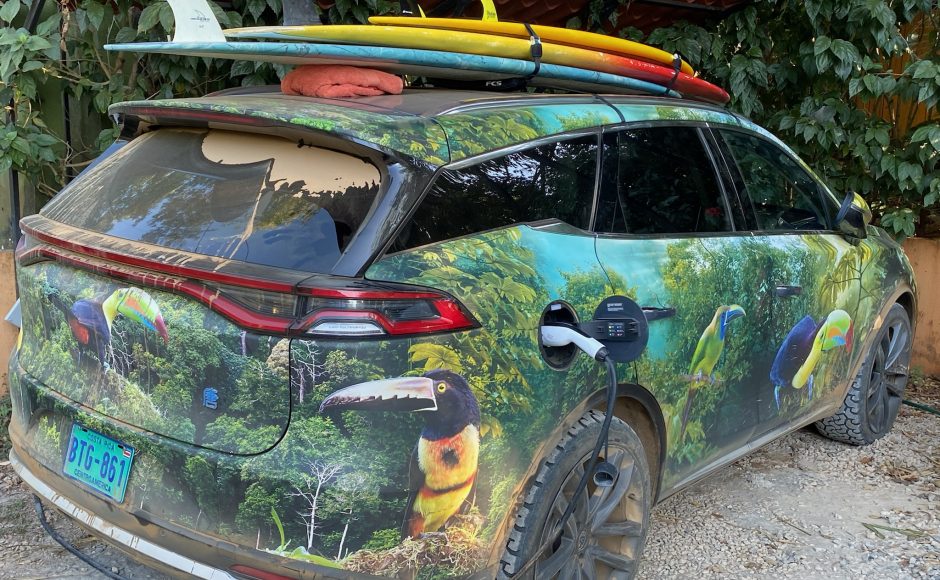Costa Rica is quietly revolutionizing its vehicle market, and if you’re not paying attention, you might miss one of the most impressive EV booms in the Americas. Electric vehicles (EVs) are taking off in this tropical paradise at a rate that’s turning heads globally, with market growth that’s hard to believe. In fact, EV registrations have skyrocketed so much that Costa Rica is setting new records, showing the rest of the continent how electrification is done.
Electric Vehicles Surge Ahead: Costa Rica’s Secret Success
Let’s talk numbers, because that’s where things get exciting. The first six months of 2024 saw Costa Rica’s electric vehicle market surpass a 15% market share. That’s impressive enough, but what really grabs attention is what happened in July. EV registrations in the country spiked by an unbelievable 197% year-on-year. That’s right—nearly double the sales from July of the previous year. If you’re thinking this sounds too good to be true, you’re not alone.
This surge has propelled Costa Rica’s EV market share for July to a whopping 27%, well beyond expectations, bringing the year-to-date figure to around 16-17%. To put this into context, Costa Rica’s EV sales in the first seven months of 2024 are already 10% higher than the entire EV sales of 2023, when the market share was 11.7%. The pace of growth is simply staggering.
So, What’s Behind the Numbers?
Here’s the thing—Costa Rica isn’t just any EV market. It’s unique in its diversity and competition. Unlike countries like Uruguay or Colombia, where a single brand (usually BYD) dominates the EV scene, Costa Rica is home to a wide variety of brands. Chinese automakers are leading the charge, but the competitive ecosystem is what really sets Costa Rica apart. While BYD holds a 70% market share in Uruguay and 50% in Colombia, in Costa Rica, the brand accounts for just 25% of sales.
That’s a healthy balance, with brands like Geely making a significant impact alongside other players. Geely’s affordable Geometry models are especially popular, making Costa Rica one of the few Latin American markets where Geely shines outside of its premium Volvo brand.
The Price War That Changed Everything
One of the key factors in Costa Rica’s EV success is affordability. Costa Rica offers a range of EVs at prices that make other markets jealous. As of now, there are 11 electric vehicle models priced under $25,000 in Costa Rica—compared to just six in neighboring Colombia. The Geometry E, in particular, ignited a price war that pushed Costa Rica’s EV market to new heights. This model is now $2,000 cheaper than when it was first introduced, a significant factor in the market’s growth.
Interestingly, EVs made in Mexico are cheaper in Costa Rica than in their home market. Take the JAC E30X, for example—it costs $22,000 in Costa Rica but $24,500 in Mexico. Similarly, the JAC eSei4 sells for $28,000 in Costa Rica, while it’s priced at $37,500 in Mexico. This kind of competitive pricing is what drives Costa Rica’s diverse and thriving EV market.
Gas Prices and Renewable Energy: The Perfect Storm
Costa Rica’s EV success isn’t just about low prices, though. The country has relatively high gas prices, around $5 per gallon, which makes the switch to electric vehicles an even more attractive option. Add to that Costa Rica’s lack of domestic oil reserves and its plentiful renewable energy sources, and you’ve got a perfect recipe for an electric revolution.
Replacing costly, imported oil with affordable, locally generated electricity is not only economically sound, but it’s also environmentally friendly. This is a win-win situation for both the government and consumers, making EVs the obvious choice for Costa Ricans looking to reduce their carbon footprint and save on fuel costs.
Charging Infrastructure: Growing but Imperfect
Of course, no electric vehicle market can grow without a solid charging network. Costa Rica’s charging infrastructure is decent, with a widespread number of 50kW DC fast chargers featuring GB/T and CCS1/CCS2 connections. However, there’s a catch—most of these charging stations only have one stand. This means that the risk of failure is higher, and the possibility of long wait times is on the horizon as EV sales continue to rise.
So far, there haven’t been widespread reports of long waits at charging stations, but it’s only a matter of time before the infrastructure will need to keep pace with the growing number of EVs on the road. If Costa Rica wants to continue leading the region in electrification, expanding its charging network will be critical.
The Future of Costa Rica’s EV Market
As Costa Rica pushes forward with its electrification goals, the country is preparing for more renewable energy projects to meet its rising energy demand. ICE (Instituto Costarricense de Electricidad) has already committed to adding more solar, wind, geothermal, and hydroelectric plants to the grid over the next decade. This will help mitigate the variability of solar and wind power and ensure a steady supply of clean energy for the growing fleet of electric vehicles.
In addition to ICE’s efforts, the country’s private sector is stepping up as well, with multiple new renewable energy projects in the pipeline. This cooperation between the public and private sectors is crucial for ensuring that Costa Rica’s energy infrastructure can handle the demands of an electrified transportation network.
Costa Rica: A Model for the Region?
Costa Rica’s rapid electrification is not just impressive—it’s a model for other Latin American countries to follow. With a competitive EV market, affordable prices, and a strong commitment to renewable energy, Costa Rica is showing that electrification is not only possible but also beneficial for the environment, the economy, and consumers.
As the rest of the region looks to Costa Rica for inspiration, it’s clear that the days of internal combustion engine vehicles (ICEVs) dominating the roads are numbered. The shift toward electric vehicles is accelerating, and Costa Rica is leading the charge. If other countries want to keep up, they’ll need to brace themselves for the coming wave of electrification.

